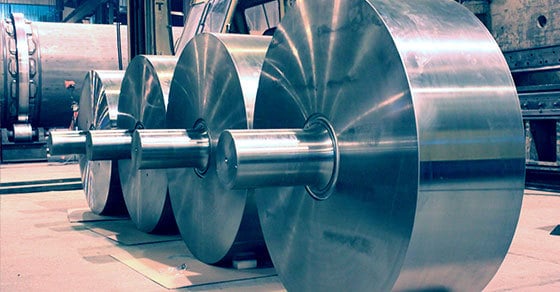As supply chains continue to experience unpredictability due to a range of factors, FEECO is recommending plant managers and maintenance personnel stock up on essential OEM parts to keep production moving across operations in every industrial setting.
Here’s a look at the situation and what parts we recommend keeping in stock.
Benefits of Maintaining an OEM Parts Inventory
The ongoing pandemic, paired with the situation in Ukraine, has turned global supply chains upside-down, bringing issues to light that have been boiling beneath the surface for years and creating new ones altogether. Everything from storage space to labor has been affected, leaving the supply chain crippled at every stage. The situation is not likely to resolve soon, as global economies work on rebuilding a broken system with a new approach.
In addition to this, inflation has spiked and experts anticipate it will continue to rise for the foreseeable future, hiking up prices for everything from fuel to metals. And while FEECO is making efforts to control costs as much as possible, some risk remains.
What does all this mean for plant managers? Long lead times and high prices. Customers can protect themselves from extensive downtime and inflated costs by stocking up on OEM parts for their process equipment now.
Building a parts inventory for rotary dryers and other industrial equipment not only gives plant managers the security of having the parts on-hand in the event of a failure, but it also protects them from future price spikes, allowing them to lock in the price at the time of purchase, instead of paying more at the time of need.
“We are advising all of our customers to implement an extreme margin of safety in their maintenance planning when it comes to acquiring parts,” comments Kent VanSickle of the FEECO Parts Team. “The supply chain has been and will likely continue to be reliably volatile, so we are recommending plants keep a range of parts in stock to avoid extensive lead times and the higher prices associated with inflation. When it comes to planning for outages, we recommend preparing 6+ months in advance to ensure they have all the necessary parts on site in time for the outage.”
What OEM parts should plant managers stock up on?
Plant managers and maintenance personnel should stock up on parts that fall into the following categories:
Parts & Components With Long Lead Times
The following items have been subject to especially long lead times, anywhere from 5 – 30 weeks, depending on the item, though it’s important to note that lead times have been extremely variable and unpredictable.
- Forged components such as tires (riding rings) and gears (typical lead time of 12-24 weeks)
- Components that rely on bearings, such as trunnions, thrust rollers, and pinion assemblies (typical lead time of 5-30 weeks; alternatives are available, but are typically more costly)
- Components utilizing exotic alloys (variable lead time)
- Large fabrications (variable lead time)
- Large reducers (typical lead time of 10-16 weeks)
- Specialized components (variable lead time)
- Burner parts (typical lead time of 10-16 weeks)
Parts & Components That Fail Without Warning
Even if components aren’t reliably subject to long lead times, we are still recommending customers stock up due to the unpredictable nature of the supply chain. This is especially important when it comes to parts that do not show signs of wear and may fail without warning, such as:
- Sensors
- Switches
- Motors
Parts & Components That Are Wear-Critical
Stocking wear-critical parts (parts that equipment cannot or should not run without) is also essential to avoiding excessive downtime and lost production. This includes components such as:
- Gears
- Bearings
- Reducers
- Trunnion Wheels
FEECO recommends ordering replacements as soon as these items begin to show signs of wear, which could be in the form of visible wear patterns or damage, excess heat, or vibrations.
Wear Items
It’s also a good idea to keep wear items on hand, since they will inevitably fail at some point. This includes:
- Bucket elevator buckets
- Replacement pins (pin mixers)
- Replacement paddles (pugmill mixers)
- Chain mill hammers
In the case of rotary drums, since items such as graphite blocks and thrust rollers serve as a wear point to protect more substantial components of the drum, replacing them as needed is critical to equipment longevity.
Conclusion
As inflation continues to rise and the global economy works to rebuild a reliable supply chain, keeping OEM parts in stock is essential to avoiding excessive downtime and inflated parts costs.
Contact the FEECO Parts Team to work on stocking a parts inventory today!

